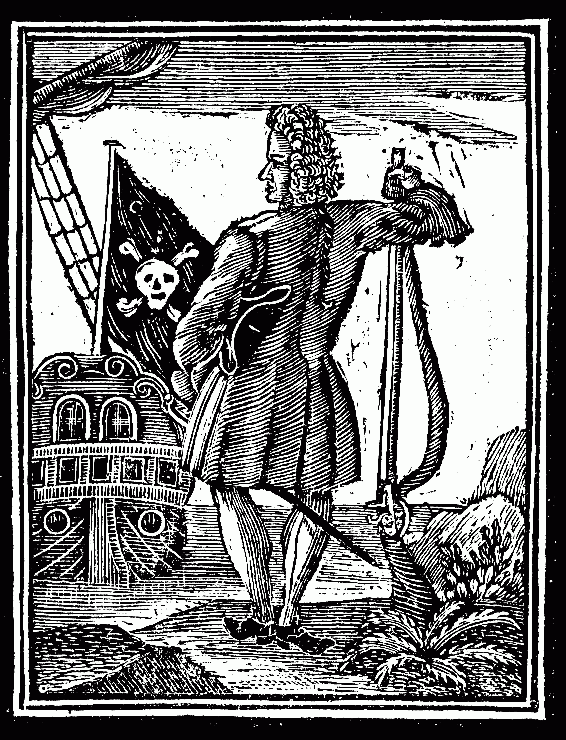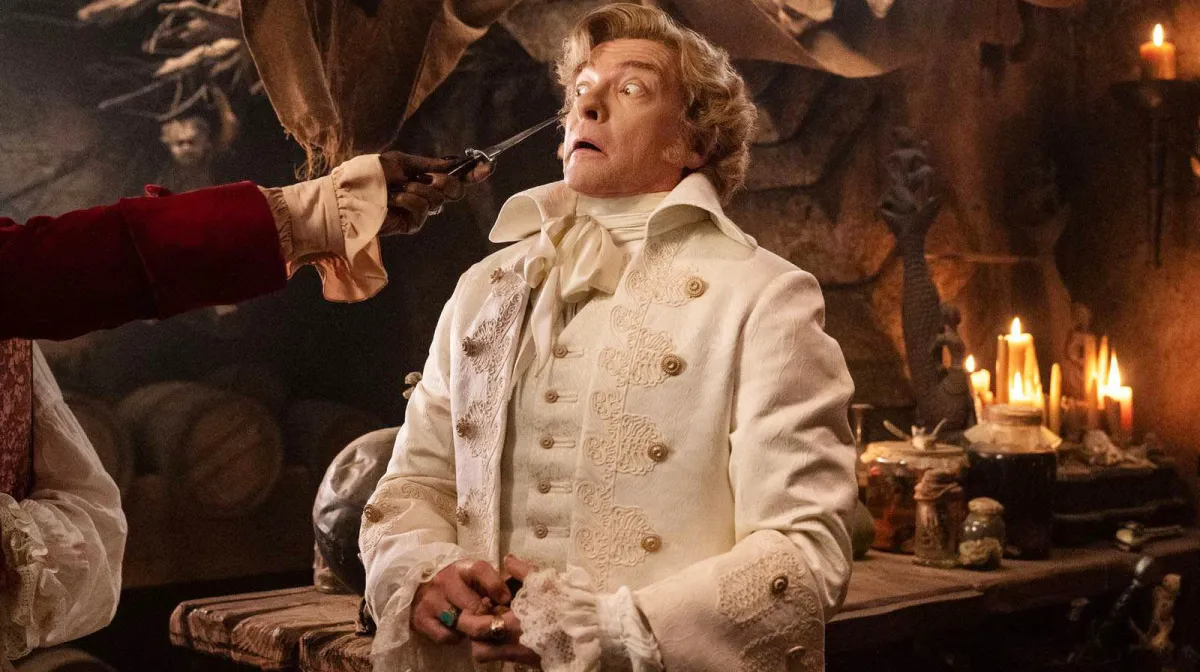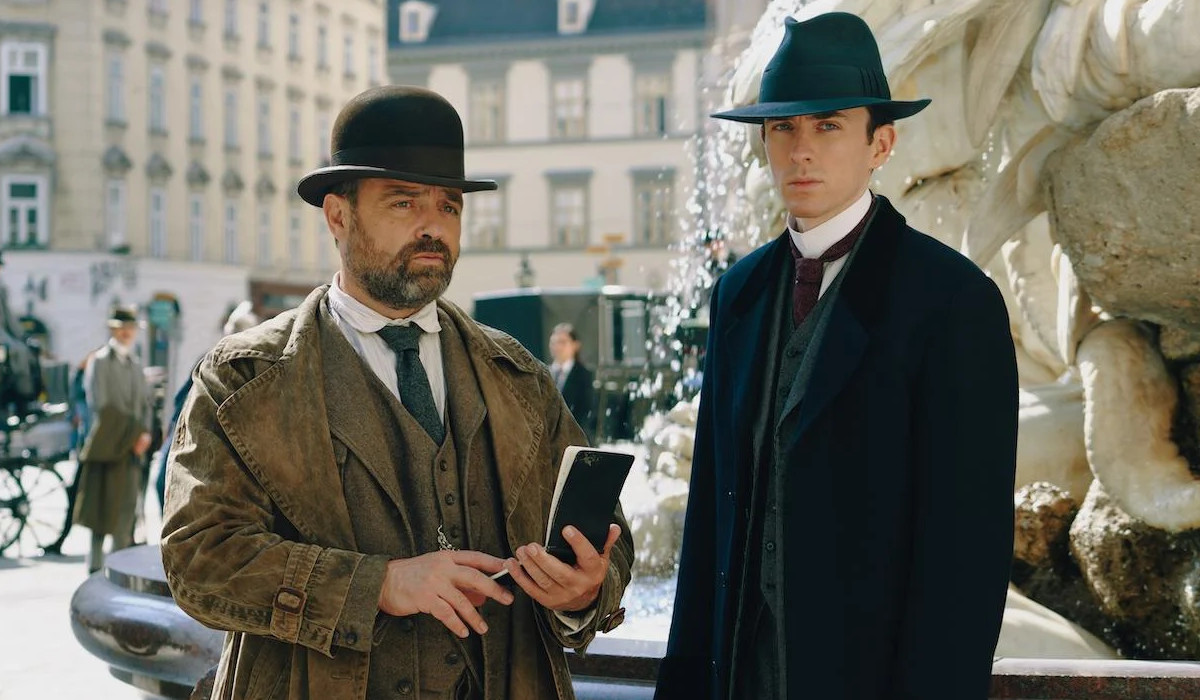I tend to be, ahem, fashionably late on fandom trends. I started watching Our Flag Means Death shortly after the season one finale aired, largely spurred on by the immense fandom excitement exhibited by this very publication. Before long, I, too, was standing on soapboxes and urging every human I came into contact with to watch this, The Best Show. For me, becoming obsessed with Our Flag Means Death also meant looking into the life of the real Stede Bonnet, played onscreen by actor Rhys Darby. The show is so delightfully absurd, that I wasn’t expecting many grounded parallels to Bonnet’s life. I was completely wrong in that assumption.
The Gentleman Pirate—as he was called in real life—was born in 1688 to an English family in Barbados. Bonnet’s parents owned a plantation, which he inherited after they died during his childhood. So, yes, the real Stede Bonnet was a plantation owner. Which is an uncomfortable historical fact. This show is, however, at heart a comedy where both Bonnet and Blackbeard have New Zealand accents, pirates put on talent shows, seagulls can talk to people, and there are resounding fuck yous to racism, heteronormativity, and colonialism as underlying themes. As IGN put it, this is “a quirky, defiant tale about outsiders for outsiders.” Bonnet married Mary Allamby, and they had four children, not two. Some accounts say one of Bonnet’s children died and offer that up as one reason he turned to piracy.
Really, the reason Bonnet began a life of piracy is unknown. Historians interviewed by the Smithsonian think Bonnet may have been “unbalanced” or that it was “something mental,” and both of those phrasings make me want to slap them a little bit. The 1724 book A General History of the Pyrates attributes Bonnet’s move to his wife’s nagging. The same account then adds Bonnet suffered “some discomforts he found in the married state”—a very memorable line you will recognize from episode four. Was I shocked to find that was a historical quote? Yes. Yes, I was.
In any case, Bonnet did indeed contract a local shipyard to build a custom 10-gun ship for him, which he named the Revenge. That same Smithsonian article quips, “As Bonnet had no obvious enemy against which to revenge himself, it’s likely he chose a name that sounded menacing and pirate-esque—indeed, many pirate ships used the name Revenge.” Bonnet then hired around 70 men to be his crew, and—yes—paid them wages. (No historical accounts mention anything about a “people-positive attitude.”) In addition to having more people on the crew of the Revenge, the real Bonnet’s crew was actually quite experienced. Even though Bonnet himself had no nautical experience in the slightest, the crew was skilled enough that they plundered several ships. And they so more successfully than receiving a mere plant in return.

Now’s a good time to mention, as we’ve pointed out before, that “historical accuracy” when it comes to pirates is a fickle matter. Figures like Blackbeard had mythical airs about them even while they were still alive. So once Bonnet lost the historical accuracy given to aristocrats and aristocrats only, the certainty of events becomes murkier. But one version of events is that Bonnet and his crew attacked a Spanish naval ship, and it went terribly. Half of the crew of the Revenge died, the Revenge itself was damaged, and Bonnet was gravely wounded. To recuperate, the Revenge sailed to Nassau—also known as “the Republic of Pirates.”
Our Flag Means Death switches around these events a bit, of course. Many of the characters who push the show’s narrative along—like Spanish Jackie (Leslie Jones), the Badminton twins (Rory Kinnear), and all of the Revenge‘s crew—are brilliant inventions of fiction. The real Bonnet and the real Blackbeard meet during this stint in Nassau. The two agreed to make an alliance and sail together. Why the notorious and fearsome Blackbeard agreed to this arrangement is anyone’s guess, and I personally like Our Flag Means Death‘s guess very much.
Again, here’s where we get a few different versions of events. Our Flag Means Death takes a little creative liberty here so that the narrative isn’t spread over several ships. One historical take says the two pirates plundered together while Blackbeard sailed on his own ship, Queen Anne’s Revenge. Another, closer to the show’s narrative, says Bonnet gave command of the Revenge to Blackbeard as he recovered from his wounds. It was during this plundering that Blackbeard gained Queen Anne’s Revenge. Most accounts end up with Blackbeard realizing that Bonnet’s a hopeless amateur. Blackbeard sent his first mate to captain the Revenge, with the consent of the ship’s crew. Bonnet, in turn, was kept as Blackbeard’s “guest” on the Queen Anne. You could potentially read “guest” as “prisoner.” Or perhaps something else? As historian B.R. Burg writes, “Like Blackbeard, his mentor in the buccaneering trade, Bonnet saved only male prisoners. Women were neither needed nor wanted aboard his ship.”
In any case, Blackbeard and Bonnet really do apply for King George’s Act of Grace, or “The Proclamation for Suppressing of Pirates.” However, the historical versions do so by going ashore to North Carolina, and each man’s reasoning is murky. While Blackbeard’s “guest,” Bonnet apparently began toying with the idea of exiling himself to Spain. Blackbeard, meanwhile, may have been plotting all along to ditch Bonnet and steal his loot. Which is exactly what he did. Blackbeard slipped away after applying for the Act of Grace. Bonnet stayed longer in North Carolina (he never returns to Barbados), but eventually returned to the Revenge to find it stripped and looted. While the real Blackbeard didn’t steal the Revenge altogether, he did maroon most of the Revenge‘s crew on a small island.
This is where season one of Our Flag Means Death actually ends. If, like me, you are unable to resist the urge to read on and see what happens to Bonnet from there, you will no doubt grow very concerned. Bonnet and his remaining crew sailed in pursuit of Blackbeard, but very distressingly, it appears that the two never meet again. I hate that possibility very, very much. I also cling to the belief that OFMD showrunner David Jenkins wouldn’t do that to us, because after all, this is a love story and a romcom.
Still, incredible antics ensue in historical accounts. Bonnet tried to disguise his return to piracy by reverting to the alias “Captain Thomas” and changing the Revenge‘s name to The Royal James. Bonnet from this point forward became a much better, and more conventional, pirate captain. He even seemingly abandoned his practice of paying his crew wages, in favor of splitting plundered loot with them. But alongside this, Bonnet also apparently became much more ruthless. Many accounts say that most of Bonnet’s crew were very loyal throughout this second act of his piratical career. But others proffer that Bonnet began to “abuse” his crew.
All of this climaxes with a big showdown at the incredibly-named Cape Fear with a British Colonel. At the risk of eventual spoilers, let’s just say that Cape Fear does not end well for Bonnet. When asked about how closely Our Flag Means Death would continue to follow Bonnet’s life, showrunner Jenkins merely laughs and acknowledges that keeping so close to history would limit the show to about three seasons. Which is fine, honestly. I just need season two immediately.
(Image credit: HBO)










Published: Apr 8, 2022 02:52 pm